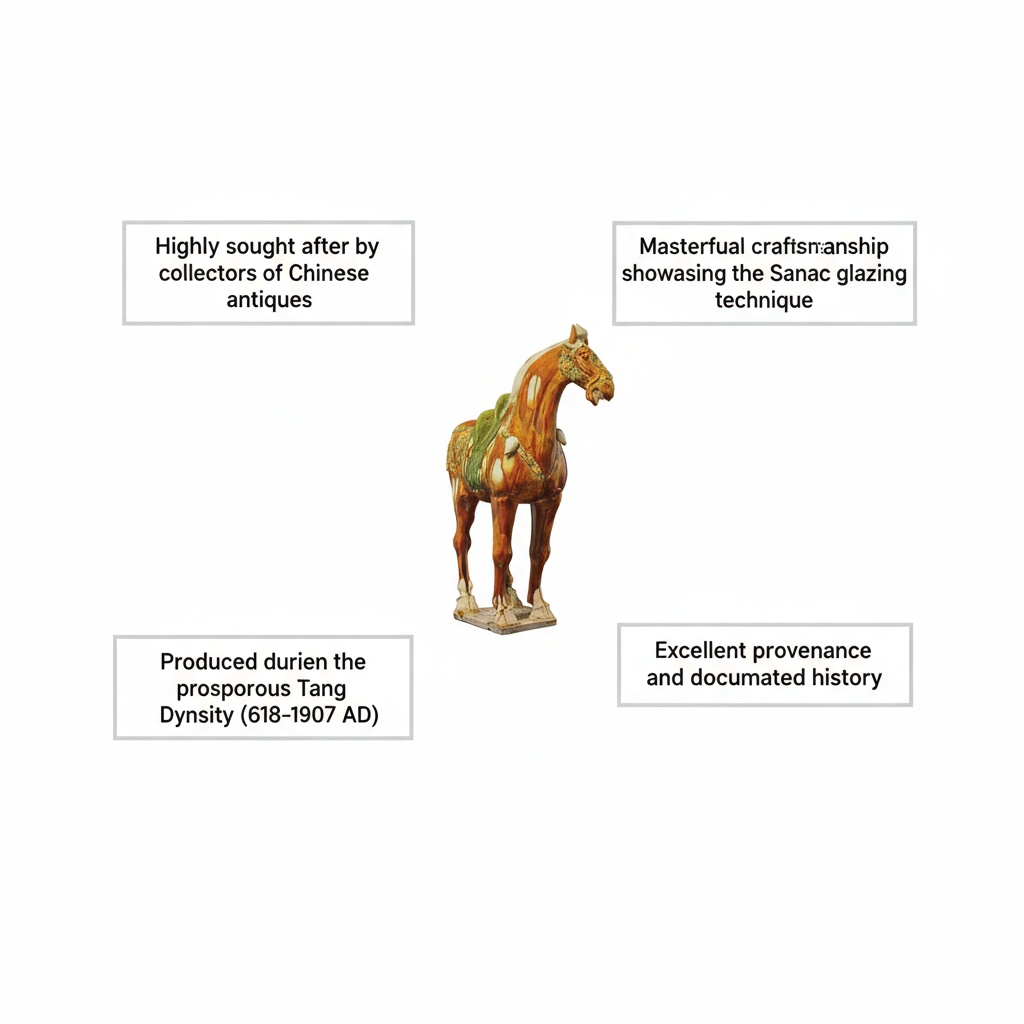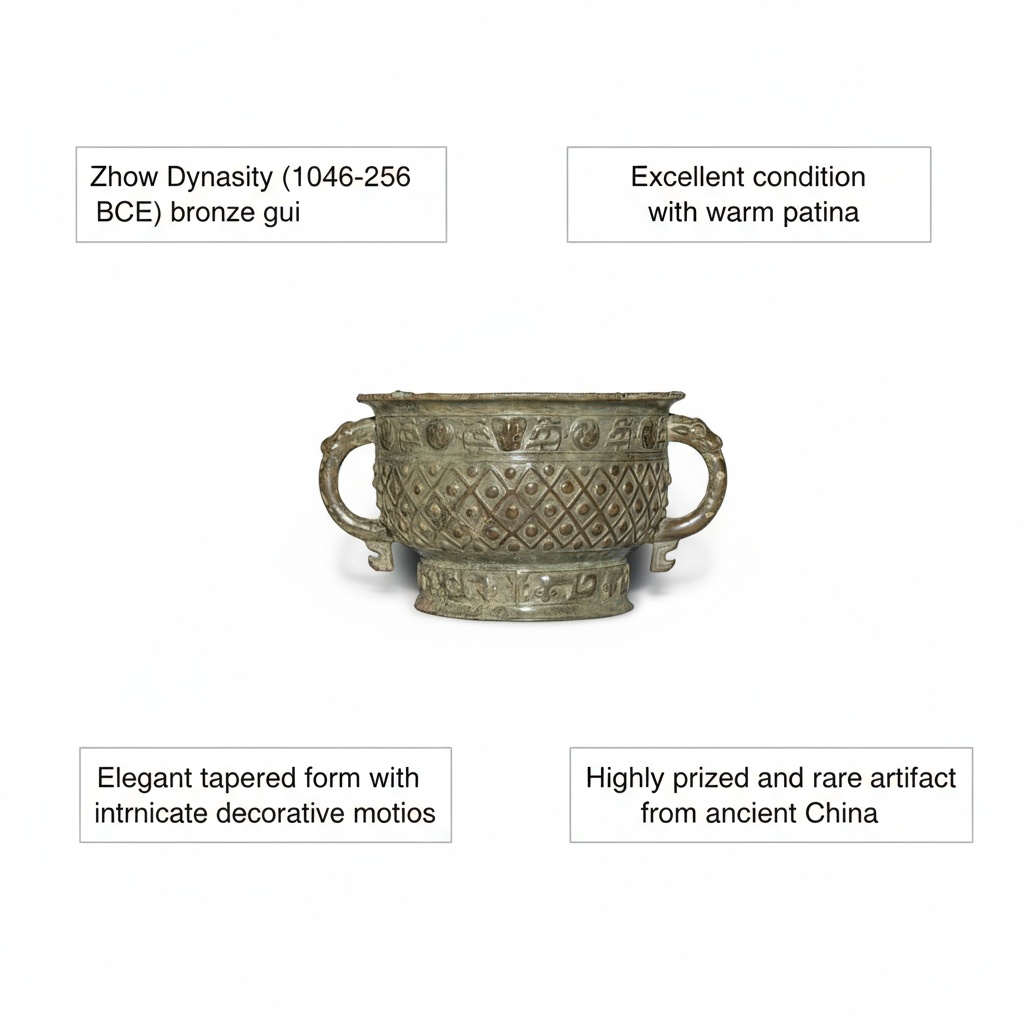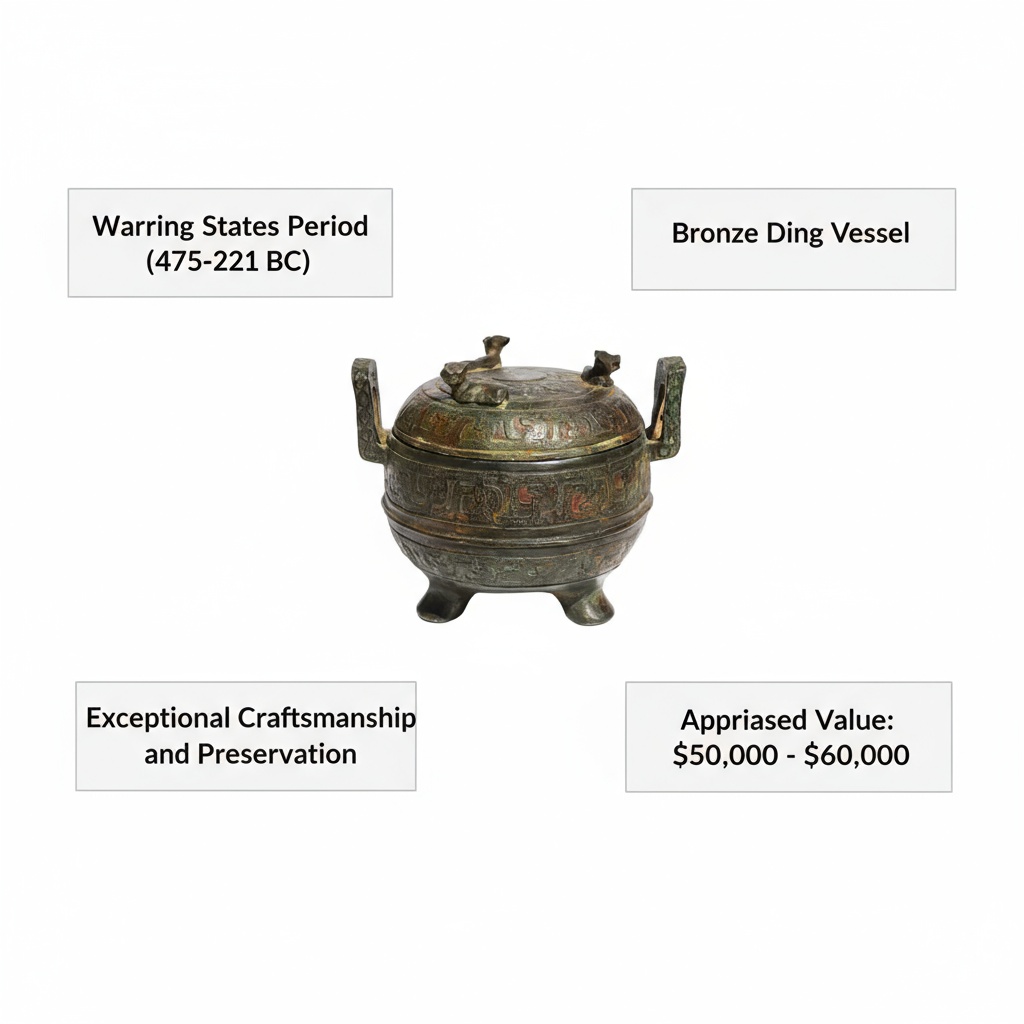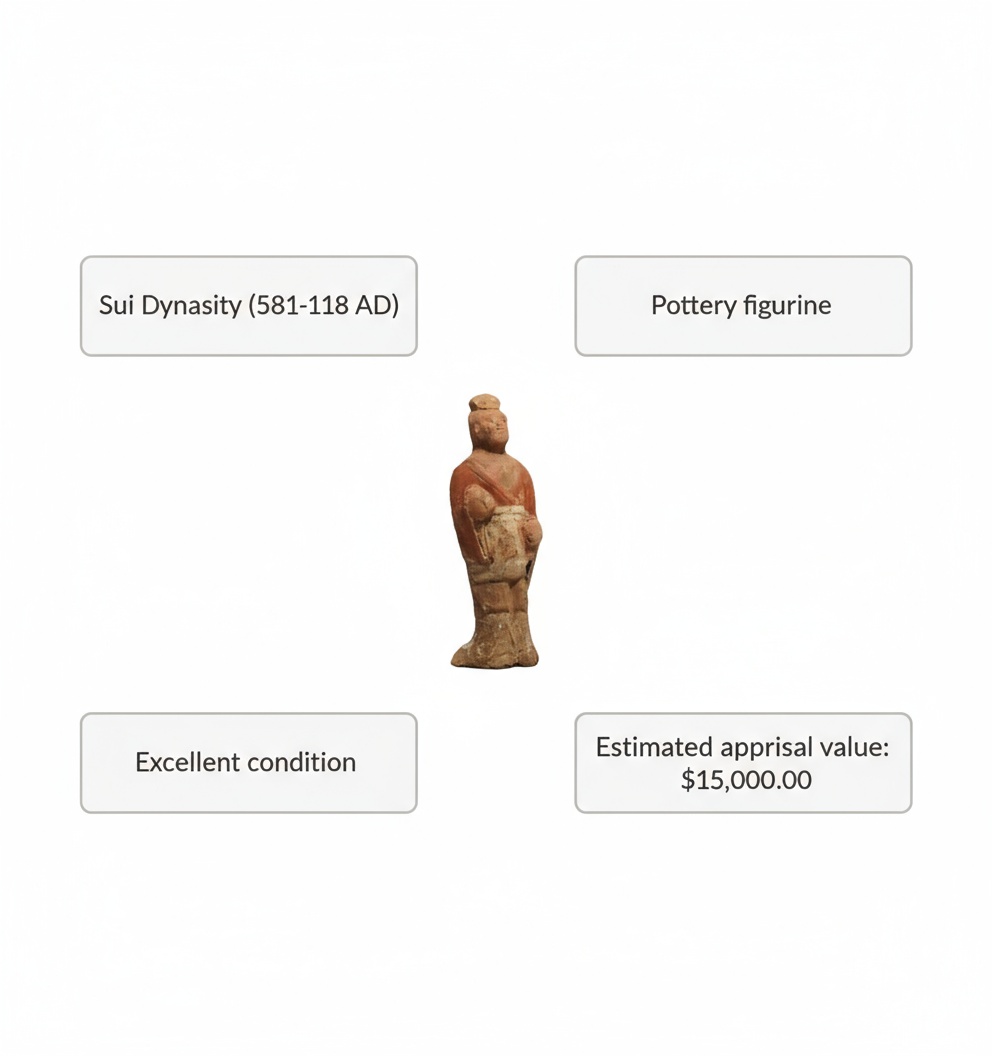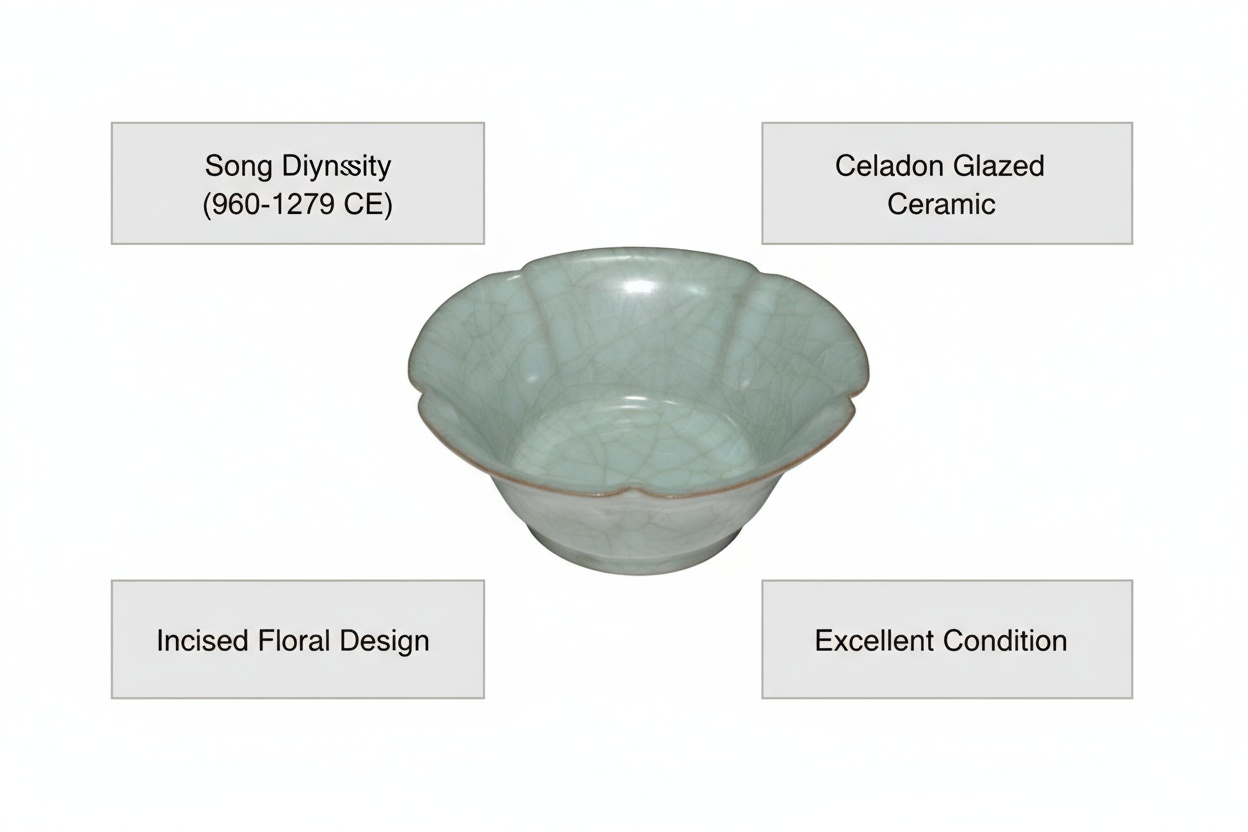<h2>Understanding the Value of a Tang Dynasty Horse Sancai Figurine</h2>
<p>If you're curious about a Tang Dynasty horse sancai figurine in your collection, you're looking at one of the most captivating pieces of ancient Chinese ceramic art. These exquisite three-colored glazed pottery figures command significant attention from collectors, museums, and investors worldwide. Understanding what makes your sancai horse valuable—and how to get an accurate appraisal—is essential whether you're planning to sell, insure, or simply learn more about your treasure.</p>
<div class="callout info"><p><strong>Did You Know?</strong></p>
<p>Tang Dynasty sancai horses typically range from $35,000 to $55,000 in estimated value, though museum-quality pieces with exceptional provenance can exceed these figures substantially.</p></div>
<h2>What Makes a Tang Dynasty Sancai Horse So Valuable?</h2>
<p>The term "sancai" literally means "three-color," referring to the distinctive lead-glazed ceramic technique that defined Tang Dynasty pottery during the 7th and 8th centuries. What makes these figurines so prized isn't just their age—it's the remarkable craftsmanship, cultural significance, and rarity.</p>
<p><strong>Key factors that influence a Tang sancai horse's value include:</strong></p>
<ol>
<li><strong>Authenticity</strong> – Genuine Tang Dynasty pieces are increasingly rare, and the market reflects this scarcity</li>
<li><strong>Provenance</strong> – A documented ownership history dramatically increases value and buyer confidence</li>
<li><strong>Condition</strong> – How well your figurine has survived the centuries directly impacts its market worth</li>
<li><strong>Size and sophistication</strong> – Larger or more intricately modeled pieces command higher prices</li>
<li><strong>Glaze quality and color variety</strong> – The vibrancy of the ochre, green, and blue glazes is a hallmark of quality</li>
</ol>
<p>The vibrant, multicolored effect you see on an authentic sancai horse results from a complex firing process that required exceptional technical mastery. These artisans were creating works of art that would captivate collectors over a thousand years later.</p>
<div class="callout tip"><p><strong>Pro Tip</strong></p>
<p>If you're considering <a href="/types/artwork">appraising artwork</a>, especially Asian ceramics, gather all available documentation beforehand—it accelerates the process and increases accuracy.</p></div>
<h2>How Provenance Affects Your Tang Sancai Horse Appraisal</h2>
<p>Provenance can dramatically influence your sancai horse's market value—sometimes by tens of thousands of dollars. A clear history linking your piece to respected collections, museum exhibitions, or documented auction sales gives potential buyers confidence and significantly reduces attribution risk.</p>
<p><strong>What strengthens provenance:</strong></p>
<ul>
<li>Previous auction catalogs with clear descriptions and sale prices</li>
<li>Museum exhibition labels or catalog entries</li>
<li>Documented sales invoices from reputable dealers</li>
<li>Published references in scholarly works on Tang ceramics</li>
<li>Photographs showing the piece in known collections</li>
</ul>
<p>Lack of provenance doesn't make your piece worthless, but it usually lowers the price and may require additional scientific testing to confirm authenticity. This is where professional appraisers with experience in Asian antiquities become invaluable.</p>
<p>When you're ready to understand the full market implications, a qualified appraiser will assess every aspect of your piece's history. If you're exploring <a href="/blog/exploring-the-role-of-provenance-in-art-appraisals-assessing-historical-significance">the role of provenance in art appraisals</a>, you'll find that documentation truly is the foundation of value in the collector's market.</p>
<h2>Condition, Restoration, and Market Impact</h2>
<p>Condition is absolutely crucial when determining a Tang Dynasty sancai horse's value. Small, stable glaze crazing—those tiny networked cracks common to ancient sancai—is often acceptable to collectors and may have minimal impact on value. However, chips, significant losses, or visible modern restoration reduce value considerably.</p>
<p><strong>How condition issues typically affect pricing:</strong></p>
<ul>
<li><strong>Minor glaze crazing:</strong> Minimal impact (0-10% value reduction)</li>
<li><strong>Small chips or losses:</strong> Moderate impact (15-30% value reduction)</li>
<li><strong>Visible restoration or professional conservation:</strong> Significant impact (20-70% value reduction, depending on severity)</li>
<li><strong>Major structural damage:</strong> Severe impact (50-90% value reduction)</li>
</ul>
<p>The key is transparency. Full-disclosure condition reports and documentation of any professional conservation improve both marketability and buyer trust. When you're preparing for an appraisal, detailed photographs—including base shots, detail views of the glaze, and any repairs—help your appraiser make accurate assessments without requiring an in-person visit initially.</p>
<p>For deeper insight into how condition affects value, explore our guide on <a href="/blog/the-impact-of-restoration-and-conservation-on-art-appraisals-balancing-preservation-and-value">the impact of restoration and conservation on art appraisals</a>.</p>
<h2>Detecting Forgeries and Ensuring Authenticity</h2>
<p>Modern reproductions of Tang sancai ceramics exist, and distinguishing genuine pieces from later imitations requires both expert connoisseurship and scientific analysis. This is one reason why working with a qualified appraiser is so important.</p>
<p><strong>How experts detect forgeries and reproductions:</strong></p>
<ol>
<li><strong>Visual inspection</strong> – Experts look for inappropriate clay composition, inconsistent glaze chemistry, or modern tool marks</li>
<li><strong>Thermoluminescence (TL) dating</strong> – This scientific test measures radioactive decay in clay to determine firing date</li>
<li><strong>X-ray fluorescence (XRF) analysis</strong> – Reveals elemental composition of glazes and clay</li>
<li><strong>Raman spectroscopy</strong> – Identifies crystalline structures in pigments and glazes</li>
<li><strong>Microscopic examination</strong> – Detects anachronistic repair materials or modern adhesives</li>
</ol>
<p>An authentic Tang Dynasty sancai horse will show age-appropriate patina, natural glaze characteristics, and consistent technical execution. Unrealistic aging or mismatched glaze colors are red flags that warrant professional testing.</p>
<p>When seeking qualified expertise, choose an appraiser with specific credentials in Asian ceramics. Look for certifications from organizations such as the <strong>Appraisers Association of America (AAA)</strong>, <strong>International Society of Appraisers (ISA)</strong>, <strong>American Society of Appraisers (ASA)</strong>, or <strong>Certified Appraisers Guild of America (CAGA)</strong>. These professionals understand both the technical and aesthetic markers that distinguish genuine Tang ceramics from later reproductions.</p>
<p>For more detailed guidance, our comprehensive resource on <a href="/blog/appraising-asian-art-and-antiques-understanding-cultural-significance-and-value">appraising Asian art and antiques</a> explores authentication methods and cultural significance in depth.</p>
<h2>Documentation, Testing, and the Appraisal Process</h2>
<p>Getting a professional appraisal for your Tang Dynasty sancai horse doesn't have to be complicated. The process varies depending on your needs and the piece's complexity, but having the right documentation speeds everything along.</p>
<p><strong>What documentation you should gather:</strong></p>
<ul>
<li>High-resolution photographs (front, back, base, glaze details, any repairs)</li>
<li>Provenance records or chain of ownership</li>
<li>Prior auction catalogs or invoices</li>
<li>Any lab test reports or condition assessments</li>
<li>Exhibition labels or museum documentation</li>
<li>Conservation or restoration records</li>
</ul>
<p><strong>Typical appraisal timelines:</strong></p>
<ul>
<li><strong>Online market estimate:</strong> 1-3 business days</li>
<li><strong>Full USPAP-compliant written appraisal with in-person inspection:</strong> 1-2 weeks</li>
<li><strong>With scientific analysis (TL dating, XRF, etc.):</strong> Several weeks for lab results</li>
</ul>
<p>When you submit information through platforms like AppraiseItNow, your assignment is allocated to a credentialed specialist with proven expertise in your item type. The appraiser will examine all submitted materials, conduct necessary analysis, and provide a professional valuation that adheres to the <strong>Uniform Standards of Professional Appraisal Practice (USPAP)</strong>—ensuring your appraisal is ethically sound, legally defensible, and widely accepted.</p>
<div class="callout note"><p><strong>What USPAP Compliance Means</strong></p>
<p>A USPAP-compliant appraisal means your valuation meets the highest professional standards, is defensible in court, and is recognized by insurers, tax authorities, and buyers worldwide.</p></div>
<h2>Tax, Insurance, and Legal Considerations</h2>
<p>Before selling or insuring your Tang sancai horse, you should understand the broader financial and legal landscape surrounding valuable antiquities.</p>
<p><strong>Insurance and valuation:</strong>
- You'll need a current fair market value appraisal
- A detailed condition report strengthens your coverage
- Update your appraisal every few years as market values shift</p>
<p><strong>Tax implications:</strong>
- Capital gains tax may apply when you sell; consult your tax advisor
- Charitable donation valuations follow specific IRS guidelines
- Proper documentation is essential for any tax-related claims</p>
<p><strong>Export and cultural property laws:</strong>
- Some countries have strict regulations governing the export of cultural artifacts
- China, in particular, has cultural patrimony laws that can restrict sales or require permits
- Provenance gaps can raise legal and ethical issues in international transactions
- Before attempting to sell internationally, consult with customs authorities and legal counsel</p>
<p>If you're navigating <a href="/blog/unraveling-the-mysteries-of-antique-appraisals-a-guide-for-collectors">antique appraisals</a>, understanding these legal considerations upfront prevents costly complications later.</p>
<div class="callout warning"><p><strong>Important</strong></p>
<p>Always consult with legal counsel if there are any questions about export permissions, cultural patrimony laws, or the piece's legal status—especially for international sales.</p></div>
<h2>Finding the Right Appraiser for Your Sancai Piece</h2>
<p>Not all appraisers are equipped to value Tang Dynasty ceramics. You need someone with specific expertise in Asian antiquities, ceramics, and Tang-period tomb wares. The right specialist understands both the technical aspects of sancai glazing and the market dynamics of Asian art collecting.</p>
<p><strong>What to look for in an appraiser:</strong></p>
<ul>
<li><strong>Relevant credentials</strong> – AAA, ISA, ASA, or CAGA certifications</li>
<li><strong>Documented expertise</strong> – Specific experience with Chinese ceramics and Tang Dynasty artifacts</li>
<li><strong>USPAP compliance</strong> – Ensures professional standards and defensibility</li>
<li><strong>References or portfolio</strong> – Evidence of previous work on similar pieces</li>
<li><strong>Transparent methodology</strong> – Clear explanation of how value is determined</li>
</ul>
<p>When you're ready to get your piece appraised, AppraiseItNow connects you with our national network of credentialed specialists. You can submit photographs and documentation securely through our platform—no office visits necessary unless you prefer in-person evaluation. Our appraisers follow strict professional standards and deliver valuations that hold up for insurance, tax, and sales purposes.</p>
<p>For guidance on finding qualified professionals, review our detailed article on <a href="/blog/how-to-find-a-qualified-appraiser-for-antique-artwork">how to find a qualified appraiser for antique artwork</a>.</p>
<h2>Market Trends and Recent Auction Results</h2>
<p>Understanding where your Tang Dynasty sancai horse fits in the current market requires awareness of recent sales and collector demand. Authentic pieces with strong provenance and excellent condition consistently command premium prices, while lesser examples or pieces with condition issues sell for substantially less.</p>
<p><strong>Typical market scenarios:</strong></p>
<ul>
<li><strong>Modern reproductions or uncertain attribution:</strong> $500–$5,000</li>
<li><strong>Authentic but condition-compromised pieces:</strong> $10,000–$30,000</li>
<li><strong>Solid examples with partial provenance:</strong> $25,000–$50,000</li>
<li><strong>Museum-quality pieces with clear provenance:</strong> $50,000–$150,000+</li>
<li><strong>Exceptional examples with exceptional provenance:</strong> $150,000–$500,000+</li>
</ul>
<p>The collector's market for Tang ceramics remains robust, particularly for pieces with documented histories and strong artistic merit. Museum acquisitions and private collectors continue to drive demand for authentic sancai horses.</p>
<p>If you're curious about how <a href="/blog/the-impact-of-market-trends-on-personal-property-appraisals-a-comprehensive-analysis-3">market trends impact personal property appraisals</a>, you'll see that Asian antiquities follow distinct patterns influenced by collector sentiment, international economic factors, and high-profile auction sales.</p>
<h2>Making Your Next Move</h2>
<p>Whether you're selling, insuring, or simply cataloging your collection, a professional appraisal gives you the clarity and confidence you need. You understand your Tang sancai horse's history, condition, and market position—and you're positioned to make informed decisions backed by certified expertise.</p>
<p>A USPAP-compliant appraisal isn't just a number; it's a comprehensive professional opinion grounded in market research, technical analysis, and deep knowledge of Asian ceramics. If you'd like to get started with an appraisal, AppraiseItNow is ready to help.</p>
<div class="callout note"><p><strong>Key Takeaway</strong></p>
<p>A professional appraisal helps you make informed decisions backed by certified experts who understand Tang Dynasty ceramics, current market values, and the factors that truly drive collector demand. Whether you're selling, insuring, or preserving your sancai horse for future generations, expert valuation is your foundation for success.</p></div>
<p>For additional insights into appraising fine ceramics and decorative arts, explore our guide on <a href="/blog/appraising-fine-porcelain-and-ceramics-valuing-delicate-artistry">appraising fine porcelain and ceramics</a> and learn how cultural significance shapes artistic value in <a href="/blog/evaluating-the-cultural-significance-of-art-appraisals-beyond-monetary-value">evaluating the cultural significance of art appraisals</a>.</p>

